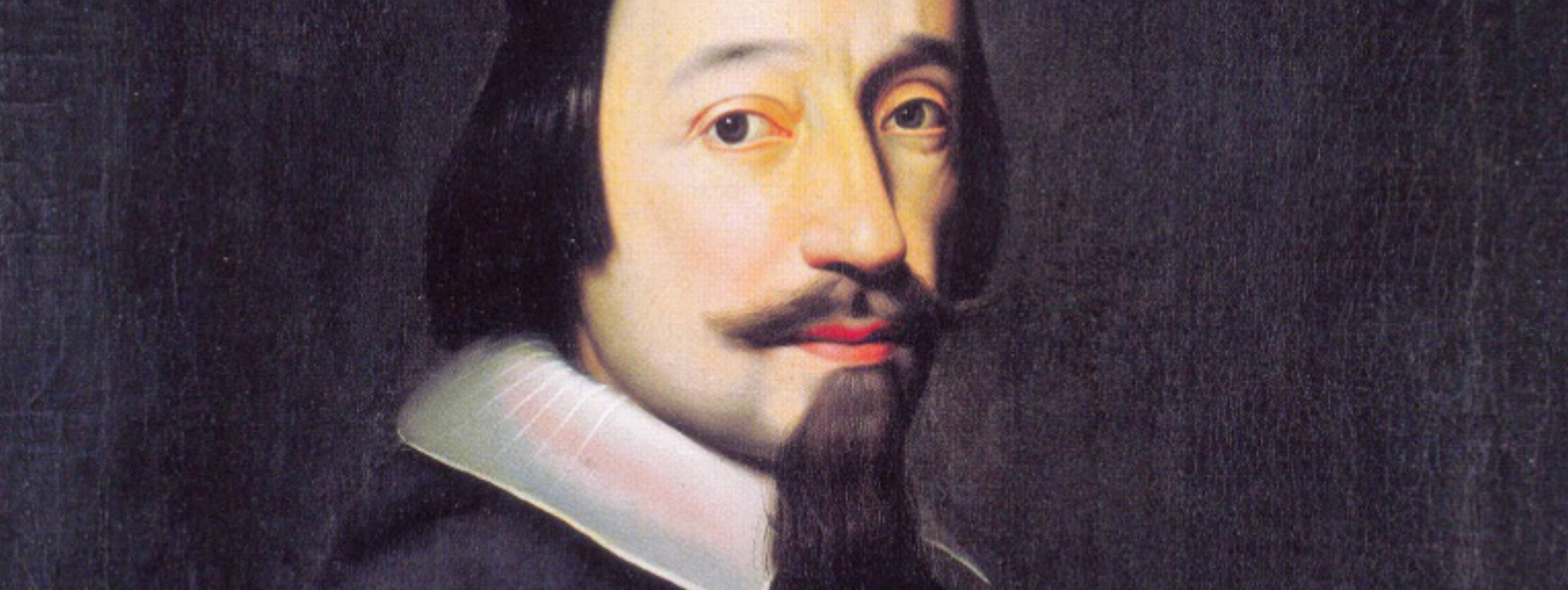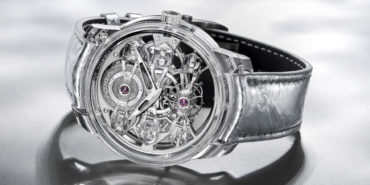Cultural Perspectives • 21 Jul 2020
How a Clock Designed for a Pope Inspired Urwerk
The sound of church bells echo across a dark, silent St Peter’s Square, resonating off the surrounding moonlit Baroque architecture and making their way toward the open windows of the Apostolic Palace, where inside a devout Pope Alexander VII is conscientiously maintaining his clerical office hours.
Unable to sleep, the bells are an unwelcome reminder that yet another sleepless night lie ahead. He wearily lifts his eyes and casts his tired gaze towards the unique clock sitting just opposite.
No, this isn’t an excerpt from the latest Dan Brown bestseller. But what exactly does it have to do with the incredible avant-garde watches of independent watchmaker Urwerk?
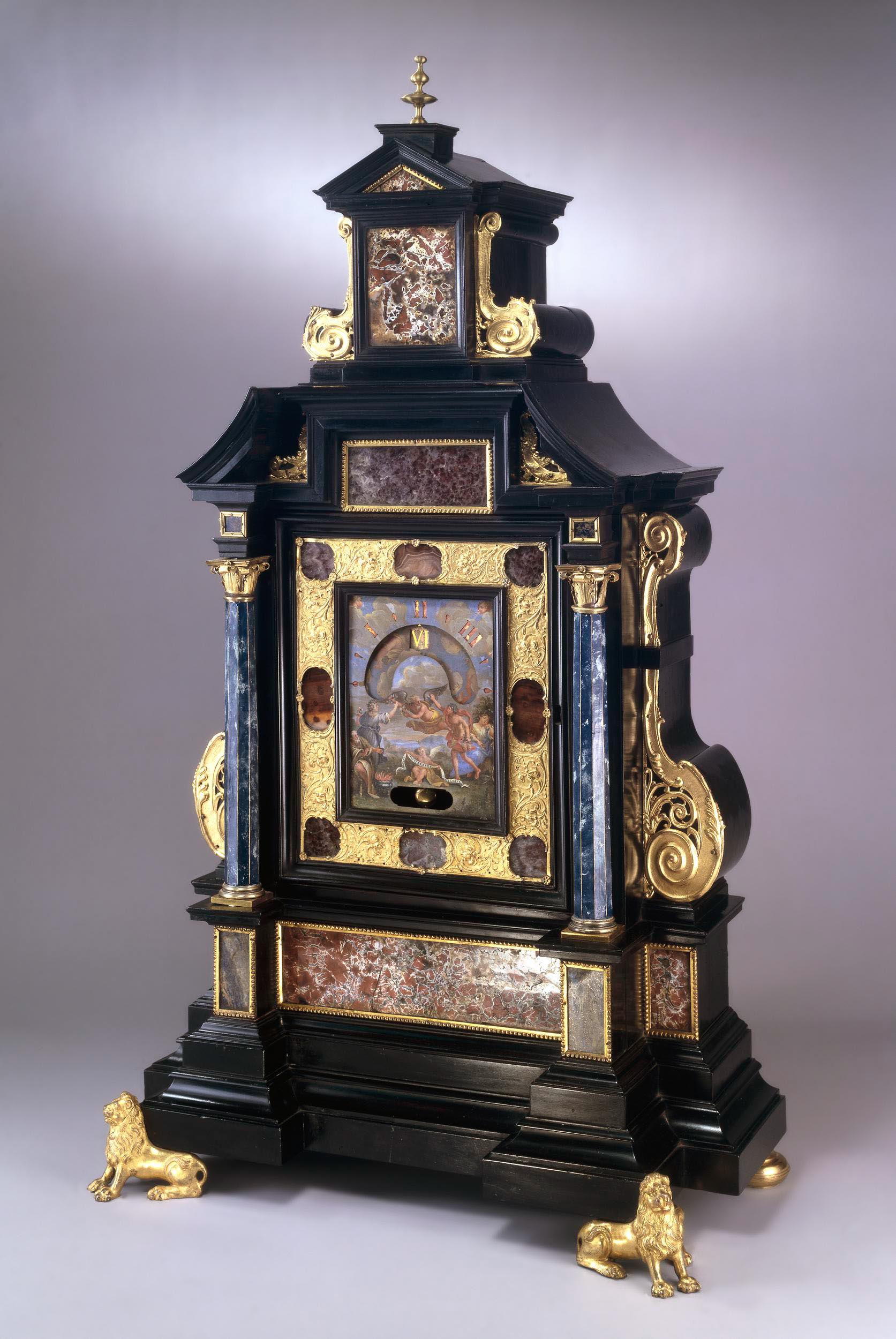
The Brothers Campani and the papal request
As the story goes, in 1655 Pope Alexander VII requested that a silent clock be made for him. Complaining to his secretary, Cardinal Barberini, that the clock in his sleeping quarters kept him awake at night with its incessant tick-tock. Worst of all, when his sleep was disturbed, he could not even read the time in the pitch-black darkness of his bedroom. Now, whether it was actually the clock that kept him awake at night, or the fact that the newly appointed Pope was feeling the pressure of his newfound responsibilities, Cardinal Barberini honoured the pontiff’s wishes and took his request to respected Roman clockmakers, the Campani brothers.
A family of inventors, philosophers, and clockmakers, the Campani brothers were immensely talented men of the Renaissance. Giuseppe Campani was well-known for his work in optics, inventing fine lenses and telescopes – which in 1663, he used to observe Saturn and clearly see that the planet had a ring. While his brothers, Matteo Campani, also a gifted optician as well as a priest, and Pietro Tommaso Campani were both highly skilled in the art of clockmaking.
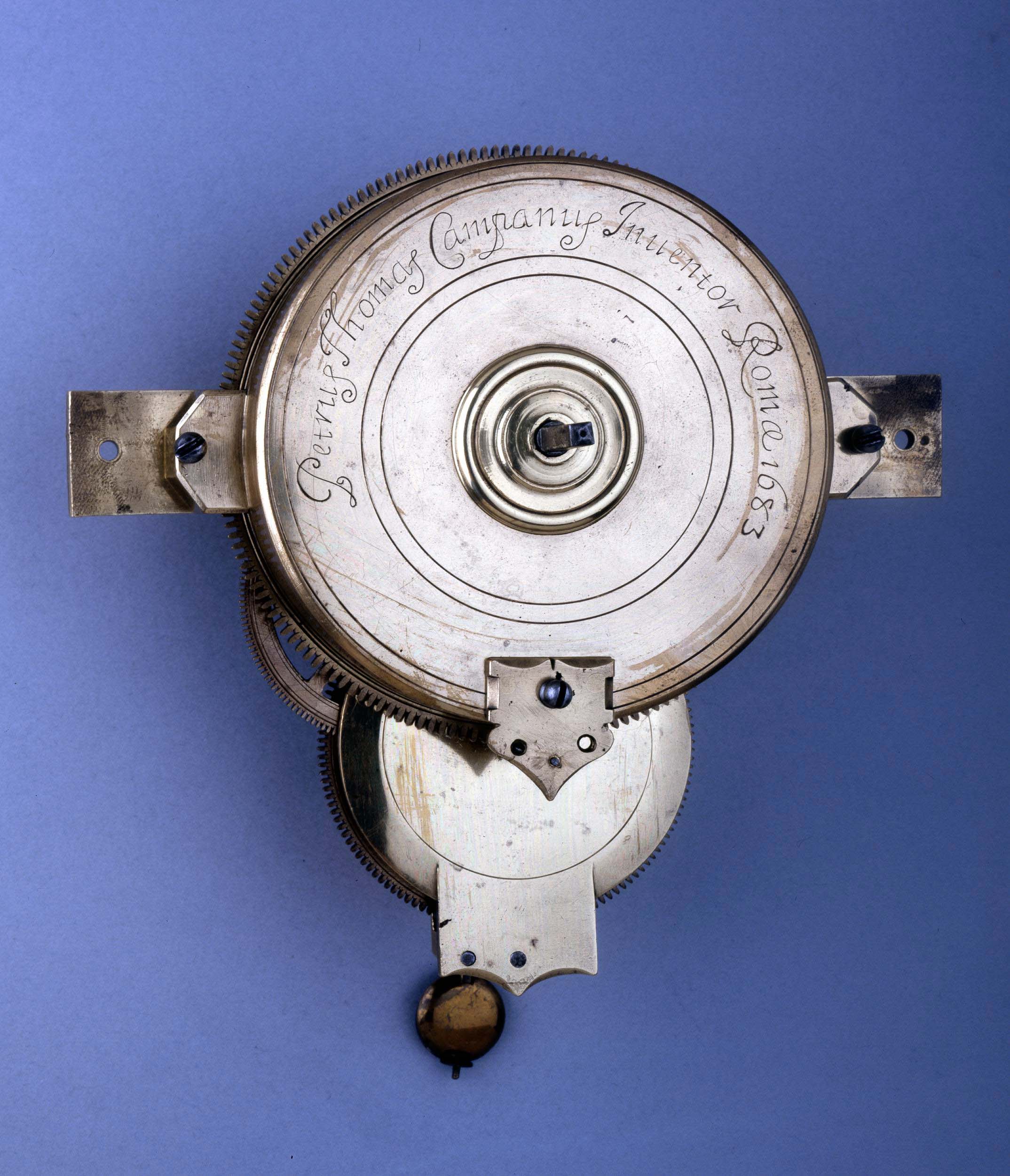
Succeeding in their endeavour to fulfill the Pope’s wishes, Pietro Tommaso invented the silent escapement. Replacing the then commonly used verge escapement, by using a pendulum linked in such a way that the new escapement could turn continuously without interruption, thus removing the tick tock sound.
This is where things get really interesting. It’s widely believed that Dutch physicist, astronomer, and inventor, Christiaan Huygens, invented the pendulum clock in 1656. However, it seems that the Campani brothers may have actually beat him to the punch at least a year earlier. Ultimately the truth and the exact answer may be lost to history, however the pendulum was not the only invention to be found within this 17th century papal clock that can be credited to the Campani brothers.
Having solved the Pope’s initial problem, the brothers went further and paired the silent escapement with a clock that could be easily read both during the day and night.
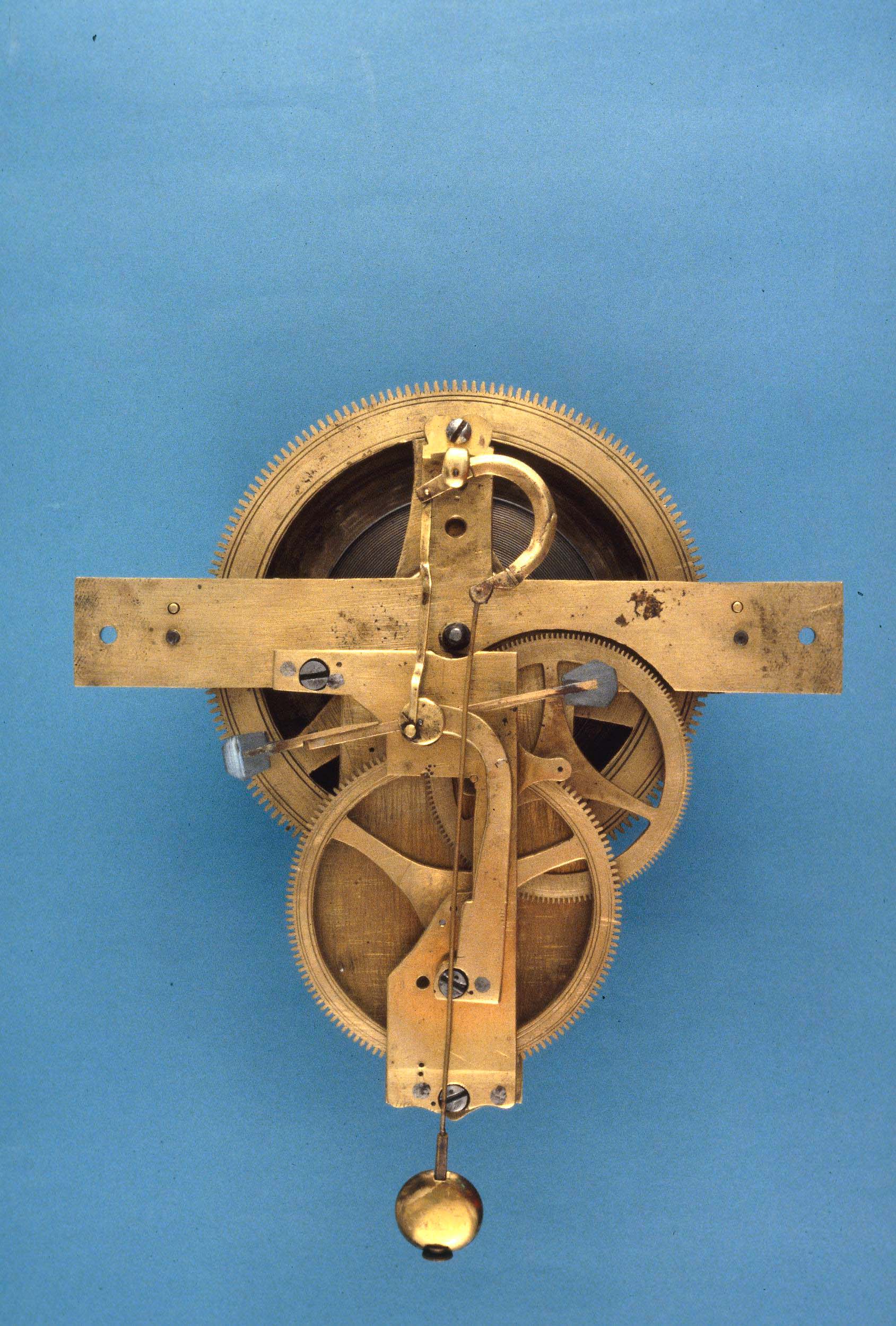
As a light source, a candle was placed on a holder inside the clock, with a flue installed on top for smoke and heat to escape. While behind a copper dial a metal disc, with two windows through which cut-out hour numerals could show, rotated in a clockwise direction as the movement turned. From the front, the hour would arc across the dial in a lunette window, disappearing on one side as the following hour appeared on the other. The result was the very first wandering hour time display, which when combined with the flickering light of the candle through the cut-out hour numerals, created the very first luminous night clock.
Impressed by the feats which the Campani brothers were able to achieve, Pope Alexander VII granted them papal privilege – similar to copyright protection – on their designs and the brothers went on to make these clocks for Kings, Queens, and noblemen all over Europe.
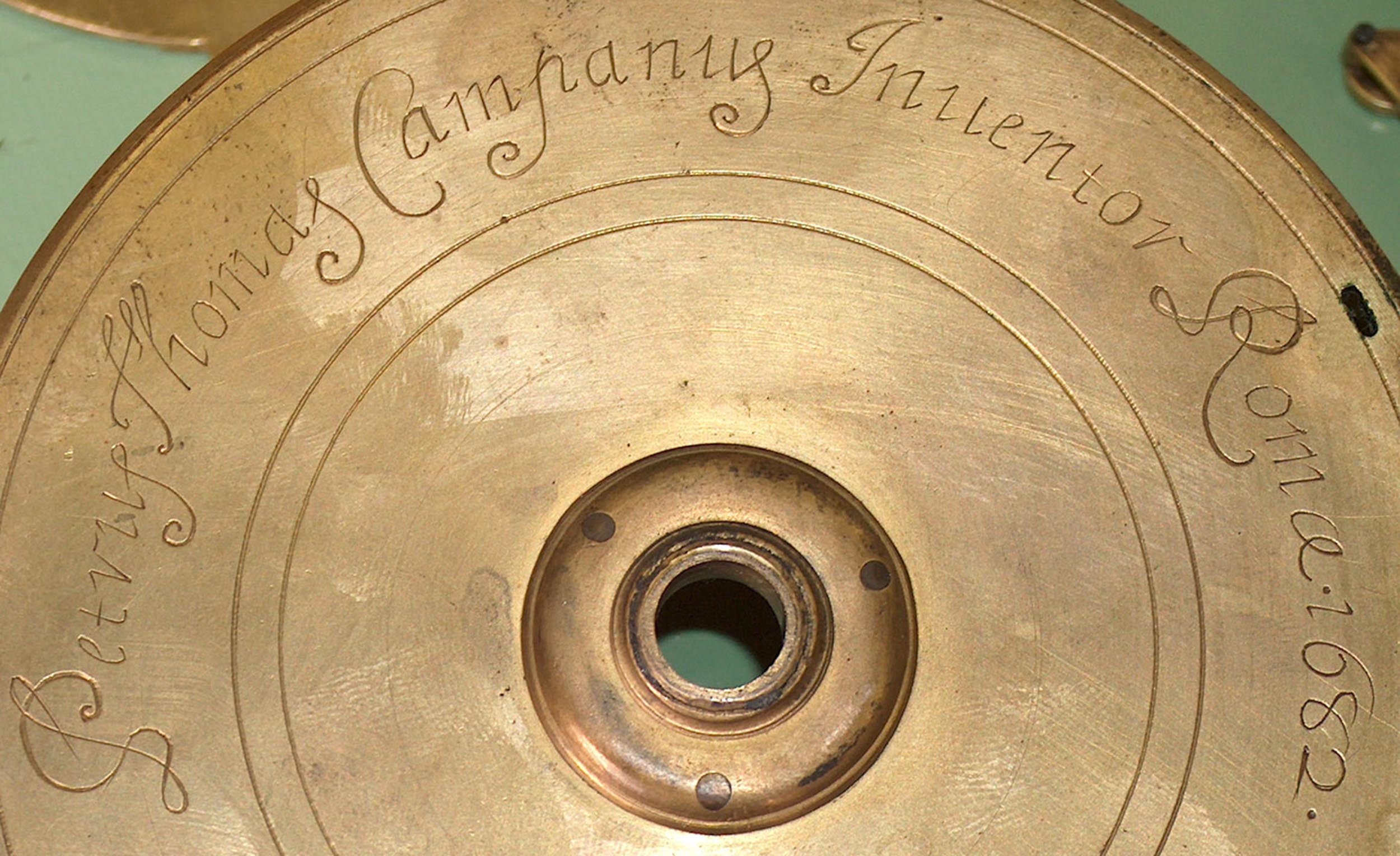
Urwerk and the family profession
Established following a meeting in 1995 between brothers, Felix and Thomas Baumgartner, both gifted watchmakers, and friend Martin Frei, a talented artist and designer. Urwerk are specialists in combining the traditional with the futuristic, continuously pushing the envelope with their ultramodern case designs and incredible innerworkings.
Literally born into watchmaking, Felix and Thomas Baumgartner’s father and grandfather were watchmakers. And the brothers spent much of their youth learning the family trade in their father’s workshop after he moved his atelier into the family home and began specialising in restoring antique clocks.
A talented man himself, their father saw some remarkably important clocks pass across his bench. Including these 17th century night clocks made by the Campani brothers. As well as sparking a passion for watchmaking, it was from these very clocks, made with the blessing of the Pope himself, that the inspiration for Urwerk’s own image of time telling was born.

The Urwerk wandering hour
Launched at Baselworld 1997, Urwerk’s debut models, the UR-101 and UR-102, introduced the world to a new vision of time. However, it was with the release of the UR-103.01, in 2003, that the neoteric watchmaker’s design language was truly cemented. Thanks in large part to the way which the incredible designs of Martin Frei were brought to life by the impressive watchmaking skills of Felix Baumgartner, allowing these unprecedented ideas to become a reality. All three models held one very important feature in common as well. Something which to this day has found its place at the heart of nearly every Urwerk watch since – the wandering hour.
As its name suggests, the wandering hour displays the hour in motion. That is, rather than remaining static the current hour ‘wanders’ across the dial in an arc. As expressive as it is ingenious, ever since its invention by the Campani brothers for Pope Alexander VII, simply reading the time has been compared to the way the Sun rises and sets.

Not ones to simply do what has been done before however, Urwerk went on to put their own spin on the time telling complication. Taking things to another level by dividing the hours into groups and spreading them across three or four separate three-dimensional satellites, which in turn rotate as they manoeuvre around the dial. The result is an even more animated interpretation of the time display, with the actual time shown as the current hour points to the exact minute as it arcs across the minute scale.
Innovating on the Campani brother’s genius, Urwerk honour the mastery, skill, and the knowledge of these Renaissance brothers. Pushing the centuries old invention farther and farther into the future in a way that only Urwerk can.
Banner Image: Fabio Chigi as Papal Nuntius to the Peace of Westphalia negotiations, by Anselm van Hulle (c. 1646)



